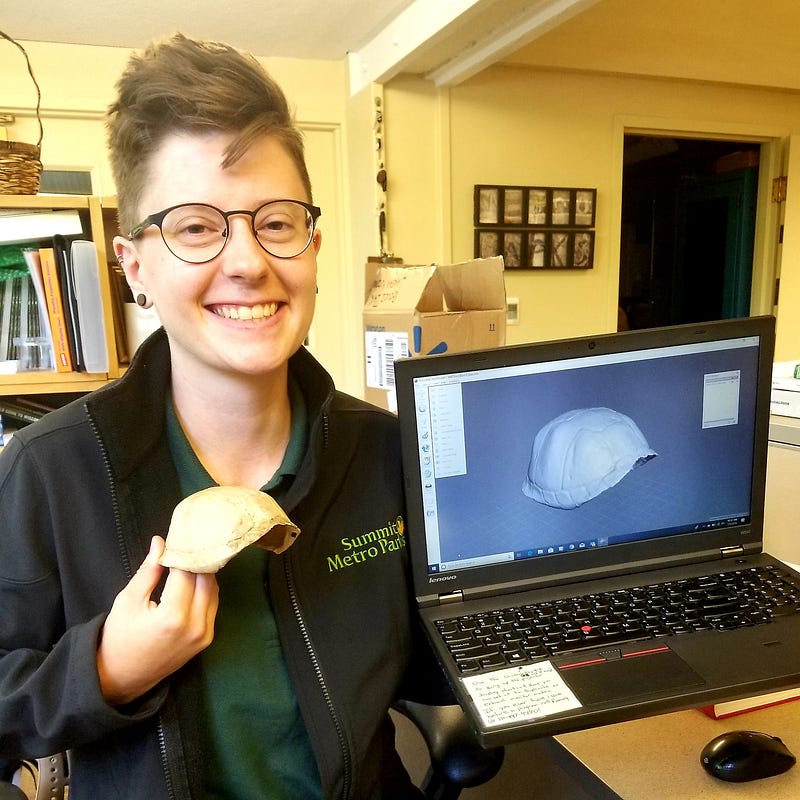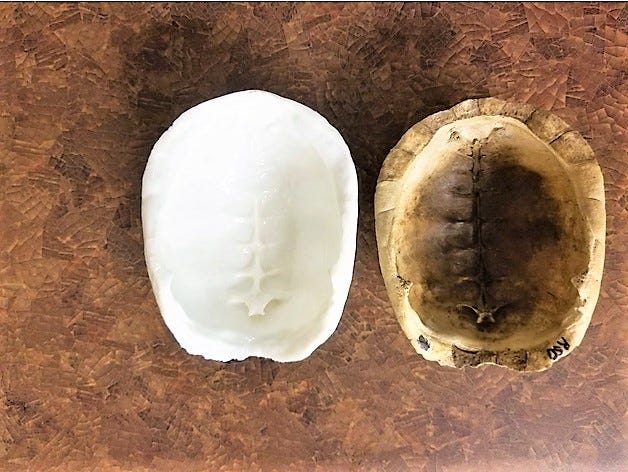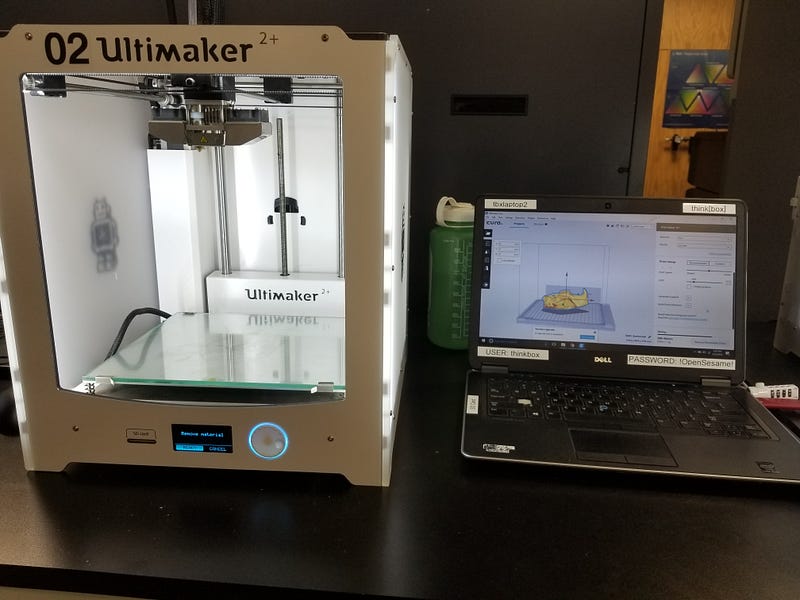Katie Burns, Interpretive Naturalist

For Summit Metro Parks, 3D printing all started with a turtle shell.
While 3D printing is a technology still used primarily by fields like architecture or engineering, it also provides a fresh break in the eternal struggle for any park or museum: the balance between protecting resources for future enjoyment, while encouraging the present-day public to see and learn about them.
Within Summit Metro Parks (SMP), we have a fantastic collection of natural history items to share. As interpretive naturalists, our staff strives to engage as many senses for the public as possible. However, some of those items are very fragile. Since it can be hard to form a personal connection to something kept behind the glass, 3D printing and scanning has stepped in to save the day.
Back to our turtle shell. Like many skulls, nests, pelts and nature you-name-it, our collection contains real turtle shells. In a touch-table exhibit at Liberty Park Nature Center, one of those shells kept meeting with the concrete floor in an unfortunate way. Questioning whether the shell should remain on exhibit, the amazing staff of SMP encouraged me to problem solve. I was able to scan the turtle shell into a three-dimensional file, which was then uploaded to a 3D printer, and viola! We now have an exact replica of the original shell that is vastly more kid-proof, as well as available for reprinting should the need ever arise.

That shell would not exist without generous community resources available in Akron and Cleveland. The equipment to scan an object into a 3D file is free for public use at the cutting-edge Sears think[box] at Case Western Reserve University. Similarly, the shell was printed at the Akron-Summit County Public Library TechZone@Main for very little cost. Our prints are made from a material called polylactic acid (PLA) which is extremely affordable and biodegradable, with a 200 year lifespan.
There are so many ways we can use this technology. Sometimes, we base our programming around finding animals, and the animals don’t get the memo! With the help of Jennifer Taylor, a computer science teacher at Manchester High School, we are printing over a dozen varieties of macroinvertebrate models that can be used in water quality programming. Those models still allow kids to identify them as individual species. We’re also printing a topographic relief map of Summit County so you can touch the elevation changes and feel for yourself why we are “the summit,” and even watch ice melt over the model to understand the legacy left by glaciers.

WHERE TO FIND 3D SCANS
SMP’s scans are posted to 3D sites such as thingiverse.com, making the file available across the internet. Since its publication this spring, our turtle shell has been downloaded over 40 times by folks across the world. Meanwhile, the Smithsonian has dedicated itself to scanning hundreds of millions of items from its collections into 3D immortality: civil war gun boats, castles, Egyptian mummies, fossil whale bones, and increasingly items found in the field by researchers that can be scanned and then left where they were found.
All of these projects take concepts that are hard to imagine, or objects too fragile to handle, and literally put them in the hands of the public. 3D printing is a versatile tool for helping the public better understand and enjoy their parks, and can help SMP grow alongside innovators within our community. I am proud of the way Summit Metro Parks is continuously striving to better serve the people of Summit County and beyond!